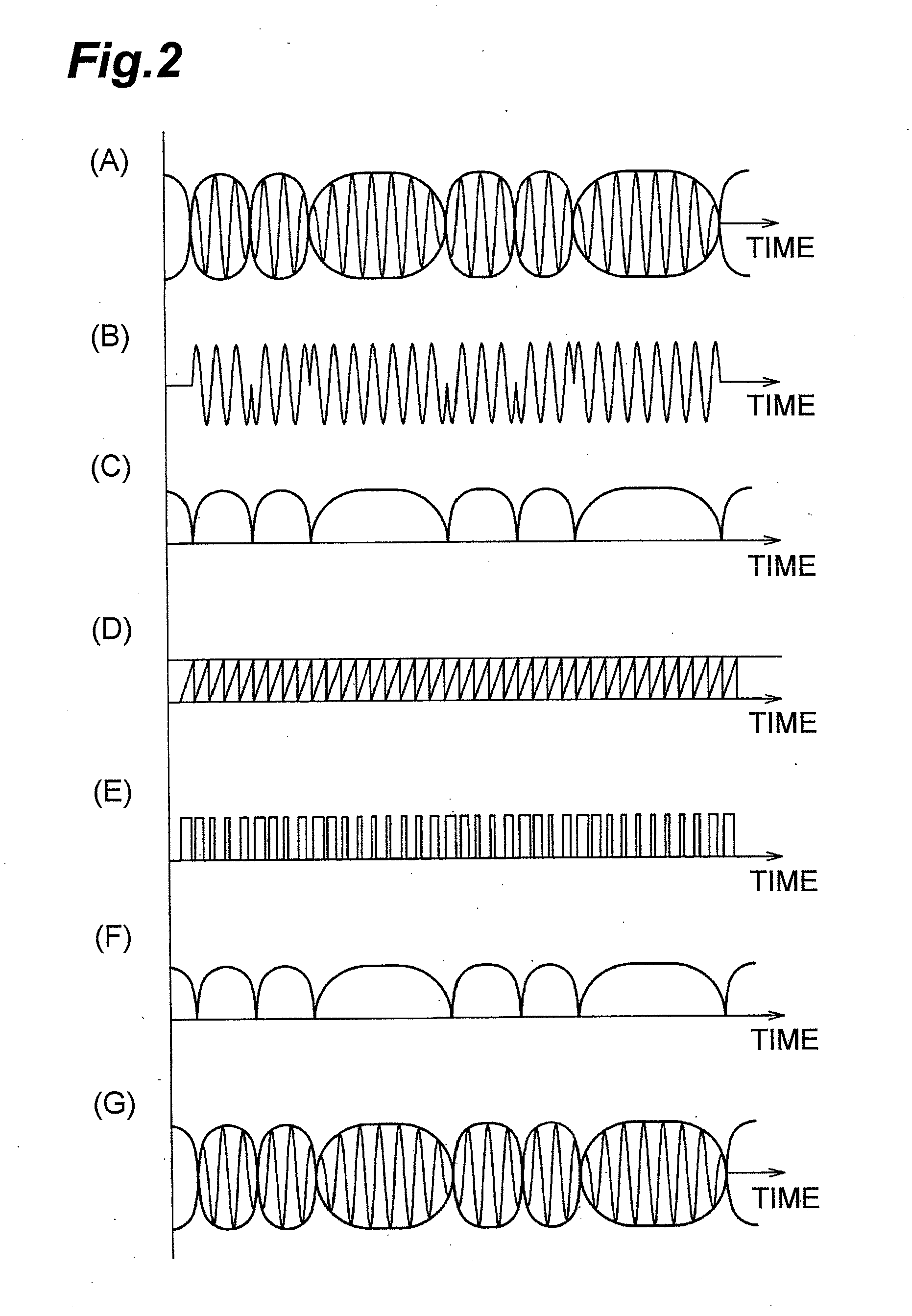Switching circuit and envelope signal amplifier
- Summary
- Abstract
- Description
- Claims
- Application Information
AI Technical Summary
Benefits of technology
Problems solved by technology
Method used
Image
Examples
embodiment 2
[0063]Embodiment 1 does not exclude an option of configuring the switching circuit 33 with discrete parts on a circuit board. In Embodiment 2, on the other hand, a switching circuit is formed on a semiconductor substrate, as an IC.
[0064]FIG. 6 is a schematic plan view of a switching circuit 33a according to another embodiment (Embodiment 2). The switching circuit 33a is formed on a semiconductor substrate of a monolithic integrated circuit. The switching circuit 33a has the coil L2 having one end connected to the power supply Vdd, and sixteen transistors M1 to M16. The other end of the coil L2 is connected to drains D1 to D16 by conductor patterns (connecting members). Sources S1 to S16 of the respective transistors M1 to M16 are connected to a ground potential (the ground potential is partially marked with diagonal lines in FIG. 6). The other end of the coil L2 is configured as the output terminal 332 of the switching circuit 33a.
[0065]Gates G1 to G16 of the respective transistors...
embodiment 3
[0072]In Embodiment 2 the vertical MOSFETs are provided on a semiconductor substrate. In Embodiment 3, on the other hand, high-withstand voltage / high-power vertical MOSFETs are provided on the same semiconductor substrate.
[0073]FIG. 7 is a schematic plan view of a switching circuit 33b according to yet another embodiment (Embodiment 3). In (A) and (B) of FIG. 7, plan views illustrating front and rear surfaces of the switching circuit 33b are shown, respectively. The switching circuit 33b is formed on a semiconductor substrate of a monolithic integrated circuit and has transistors M1, M2, . . . , M8 of vertical MOSFETs that are disposed in a circular pattern. Sources S1 to S8 and gates G1 to G8 of the transistors M1, M2, . . . , M8 are formed on the front surface of the semiconductor substrate, whereas drains D1, D2, . . . , D8 of the respective transistors M1, M2, . . . , M8 are formed on the rear surface of the semiconductor substrate.
[0074]Sources S1 to S16 of transistors M1 to M1...
PUM
 Login to View More
Login to View More Abstract
Description
Claims
Application Information
 Login to View More
Login to View More - R&D
- Intellectual Property
- Life Sciences
- Materials
- Tech Scout
- Unparalleled Data Quality
- Higher Quality Content
- 60% Fewer Hallucinations
Browse by: Latest US Patents, China's latest patents, Technical Efficacy Thesaurus, Application Domain, Technology Topic, Popular Technical Reports.
© 2025 PatSnap. All rights reserved.Legal|Privacy policy|Modern Slavery Act Transparency Statement|Sitemap|About US| Contact US: help@patsnap.com



